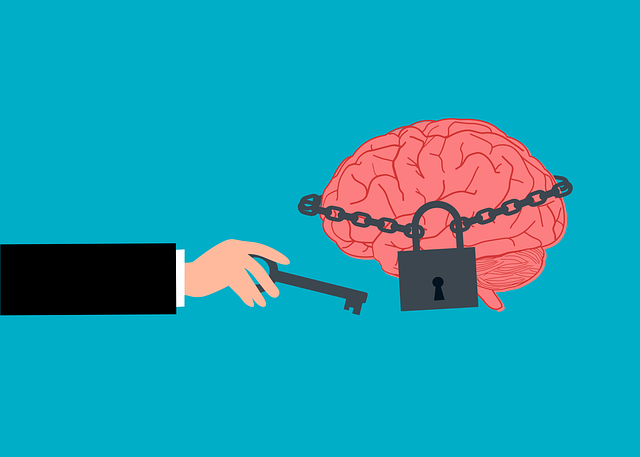Evaluating therapy programs for children affected by domestic violence demands a multifaceted approach combining qualitative (interviews, focus groups) and quantitative (attendance rates, emotional intelligence measures) methods. This includes tracking KPIs like self-regulation, social interactions, and problem-solving abilities using tools like the Child Behavior Checklist (CBCL). Regular follow-ups ensure resilience building and timely adjustments in therapy approaches, fostering safe spaces for expression and promoting long-term mental wellness. Integrating risk management planning is essential for ethical standards and client safety.
Mental wellness program evaluations are crucial for ensuring effective support for children affected by domestic violence. This article explores three key aspects: assessing the impact of therapy programs, monitoring progress and safety within support initiatives, and comparing therapeutic approaches. We delve into specific methods, such as identifying KPIs, qualitative and quantitative data collection, case study analyses, client feedback mechanisms, and comparative research on therapy modalities like cognitive-behavioral and play therapy. Understanding these evaluation techniques is essential for optimizing care in domestic violence cases.
- Assessing the Impact of Therapy Programs for Children Affected by Domestic Violence
- – Identifying key performance indicators (KPIs) specific to child therapy in domestic violence cases.
- – Methods for collecting qualitative and quantitative data on program effectiveness.
Assessing the Impact of Therapy Programs for Children Affected by Domestic Violence

Evaluating the impact of therapy programs designed for children affected by domestic violence is a multifaceted process that goes beyond mere numbers. While quantitative data such as attendance rates and program completion can provide initial insights, they do not capture the nuanced changes in a child’s life. Qualitative assessments, including interviews, focus groups, and observations, offer a deeper understanding of participants’ experiences. These methods allow children to express their feelings, strengths, and challenges openly, revealing improvements in emotional intelligence that may not be evident through quantitative measures alone.
Therapy for children impacted by domestic violence aims to foster coping skills development and mental wellness coaching programs that support them in processing trauma and rebuilding resilience. By integrating various evaluation techniques, therapists can gauge progress in areas like self-regulation, social interactions, and problem-solving abilities. This holistic approach ensures that the program’s benefits extend beyond immediate symptoms, promoting long-term emotional well-being and healthy relationships.
– Identifying key performance indicators (KPIs) specific to child therapy in domestic violence cases.

Evaluating the effectiveness of therapy for children exposed to domestic violence requires tailored metrics and KPIs. These should encompass a multi-dimensional approach, capturing both the child’s immediate emotional well-being and their long-term mental health trajectory. Key performance indicators could include changes in behavioral scores, such as those measured by standardized tools like the Child Behavior Checklist (CBCL), which assesses internalizing and externalizing problems. Additionally, measuring the child’s emotional regulation skills, social interactions, and coping strategies using tools that assess emotional intelligence can provide valuable insights into their therapeutic progress.
Risk management planning for mental health professionals plays a crucial role in these evaluations. Crisis intervention guidance ensures therapists are equipped to handle acute situations, while also facilitating safe spaces for children to express their experiences. Regular follow-ups and ongoing assessment help track the child’s resilience and potential setbacks, allowing for timely adjustments in therapy approaches. This comprehensive evaluation process not only guides the immediate crisis intervention but also contributes to the development of effective strategies for supporting children affected by domestic violence.
– Methods for collecting qualitative and quantitative data on program effectiveness.

Evaluating mental wellness programs requires a comprehensive approach that incorporates both qualitative and quantitative data collection methods. Qualitative techniques, such as interviews and focus groups, offer insights into participants’ experiences, perceptions, and emotions associated with therapy for children exposed to domestic violence. These methods allow for exploring complex themes, understanding individual narratives, and identifying unique barriers or facilitators to healing. For instance, semi-structured interviews can delve into the impact of specific therapeutic interventions on a child’s emotional well-being and family dynamics.
Quantitative data collection involves structured surveys, outcome measures, and statistical analyses to assess program effectiveness. This includes tracking changes in mental health symptoms, behavioral outcomes, and overall functioning before and after participation in mental wellness coaching programs. By combining these approaches, professionals can gain a holistic view of the program’s impact, ensuring that interventions are evidence-based, culturally sensitive, and tailored to the diverse needs of children affected by domestic violence. Moreover, integrating risk management planning for mental health professionals within these evaluations is crucial for maintaining ethical standards and client safety during the therapeutic process.
Evaluating mental wellness programs, particularly those catering to children exposed to domestic violence, is a multifaceted process. By employing both qualitative and quantitative methods, we can accurately assess the impact of therapy. Identifying specific KPIs, such as improved emotional regulation, enhanced coping strategies, and increased safety feelings, allows for comprehensive program evaluation. Through rigorous data collection techniques, we gain valuable insights into what works best in therapy for children affected by domestic violence, enabling us to optimize support systems and foster their resilience.














